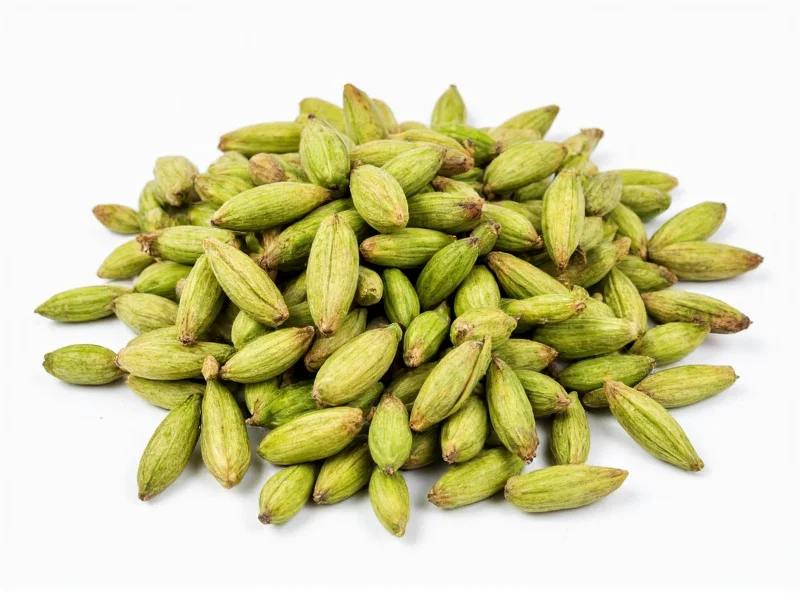Understanding cardamom substitutions is essential for achieving authentic flavors in your cooking. Cardamom exists in two primary forms: whole green pods containing black seeds, and pre-ground powder. While both come from the same plant, their flavor profiles and potency differ significantly due to oxidation and processing.
Why Cardamom Forms Require Precise Conversion
Whole cardamom pods maintain their complex citrusy, floral, and slightly minty flavor profile longer than ground cardamom. When you grind the seeds yourself from fresh pods, you release volatile oils that create a more vibrant, nuanced flavor compared to pre-ground versions that have lost some aromatic compounds through oxidation.
The key reason for the 6:1 ratio (pods to ground) is that ground cardamom contains not just the seeds but often includes some of the pod material in commercial preparations. Additionally, pre-ground cardamom loses potency over time, requiring slightly more to achieve similar flavor intensity.
Step-by-Step Substitution Guide
When substituting cardamom pods for ground cardamom in your recipes, follow these professional kitchen practices:
- For replacing ground cardamom with pods: Use 6 pods per teaspoon of ground cardamom called for in your recipe. Remove the seeds from the pods by gently cracking them open with the back of a knife.
- For replacing pods with ground cardamom: Use 1/6 teaspoon of ground cardamom per pod. For best results, add ground cardamom later in the cooking process than you would whole pods.
- Adjust for freshness: If your ground cardamom is older than 6 months, increase the amount by 25% as flavor compounds degrade over time.
- Grind your own: For superior flavor, freshly grind seeds from pods using a dedicated spice grinder or mortar and pestle just before use.
| Recipe Requirement | Substitution with Pods | Substitution with Ground |
|---|---|---|
| 1 teaspoon ground cardamom | 6 cardamom pods (seeds only) | 1 teaspoon |
| 1 tablespoon ground cardamom | 18 cardamom pods (seeds only) | 1 tablespoon |
| 8 cardamom pods | 8 pods | 1 1/3 teaspoons ground |
| 1/2 teaspoon ground cardamom | 3 cardamom pods (seeds only) | 1/2 teaspoon |
Flavor Profile Differences You Should Know
Understanding the flavor differences between cardamom forms helps you make better substitutions. Whole pods provide:
- More complex, brighter citrus notes
- Subtle eucalyptus and mint undertones
- Longer flavor persistence in cooked dishes
- Better performance in slow-cooked recipes
Ground cardamom typically offers:
- Milder, more uniform flavor profile
- Less pronounced top notes
- More immediate flavor release
- Better integration in baked goods and quick preparations
Recipe-Specific Substitution Tips
Different cooking methods require nuanced approaches to cardamom substitution:
For baking: When substituting cardamom pods for ground in baked goods, grind the seeds extremely fine using a coffee grinder dedicated to spices. Coarse seeds can create unpleasant texture in delicate cakes and pastries. The cardamom pod to ground conversion remains 6:1, but texture matters more in baking.
For beverages: In chai, coffee, or other drinks, whole pods can be steeped directly. Use 2-3 pods per cup as a substitute for 1/4 teaspoon ground cardamom. Remove pods before serving to prevent bitterness from prolonged steeping.
For savory dishes: In curries and stews, whole pods can be added early in cooking and removed before serving. When substituting ground cardamom for pods in these dishes, add it during the last 10-15 minutes of cooking to preserve flavor.
Common Substitution Mistakes to Avoid
Chefs often make these errors when converting between cardamom forms:
- Using the entire pod: Only the black seeds inside provide flavor; the fibrous outer pod is inedible and will make your dish bitter.
- Ignoring freshness factors: Old ground cardamom may require up to 50% more than the standard conversion to match fresh pod flavor.
- Over-grinding: Grinding cardamom seeds too fine can release bitter compounds from the seed husks.
- Incorrect timing: Adding ground cardamom too early in cooking causes flavor loss; add it later than you would whole pods.
Storage Considerations Affecting Substitution Ratios
How you store your cardamom significantly impacts substitution accuracy. Properly stored in an airtight container away from light and heat:
- Whole cardamom pods maintain peak flavor for 12-18 months
- Ground cardamom retains optimal flavor for only 6-8 months
As ground cardamom ages, you'll need to increase the amount by 25-50% to achieve similar flavor intensity to fresh pods. Always smell your spices before using them—fresh cardamom should have a strong, complex aroma.
Practical Application: Recipe Conversion Examples
Swedish Cardamom Buns: If a recipe calls for 2 teaspoons of ground cardamom, use 12 cardamom pods. Remove seeds, grind finely, and sift before incorporating into the dough for the traditional texture.
Indian Garam Masala: When making this spice blend from scratch, substitute 10 cardamom pods (seeds only) for 1 2/3 teaspoons of ground cardamom. Toast the seeds briefly before grinding for enhanced flavor.
Cardamom-Infused Simple Syrup: For a syrup recipe requiring 1 teaspoon ground cardamom, use 6 cardamom pods. Gently crack pods (don't remove seeds) and steep in the hot syrup for 15 minutes before straining.











 浙公网安备
33010002000092号
浙公网安备
33010002000092号 浙B2-20120091-4
浙B2-20120091-4